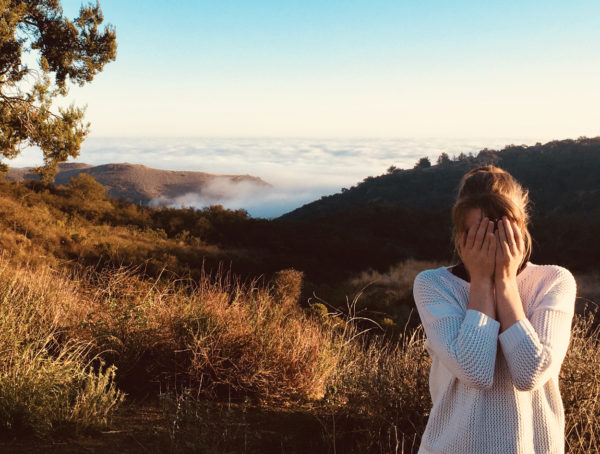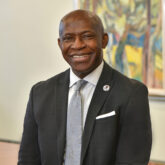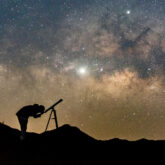This experience, with its dramatic snow accumulation, snow drifts and white-outs, etched itself permanently into Farfaglia’s mind and the Fulton-based author decided to commemorate the 50th anniversary of the storm by writing a book.
“When I put the call out that I was writing a book based on people’s memories of the ’66 storm, my phone rang nonstop for weeks and every day my email inbox had a new story waiting for me,” he writes in the prologue of his book, Voices in the Storm: Stories from the Blizzard of ’66.
 He ended up interviewing more than 200 people who lived and worked in the area at that time.
He ended up interviewing more than 200 people who lived and worked in the area at that time.
In the book, Farfaglia shares some of those stories, pieced together from personal accounts, newspaper articles and weather reports. The stories include how farm workers lived in their barns to care for their animals, how a utility employee helped distribute milk to families from a utility truck and how snow plow drivers basically stayed on the road for four days straight and worked hard to dodge abandoned snow-covered cars on the roads.
In one of his favorite chapters, Farfaglia points out how the “Circle of Life” doesn’t stop for a winter storm. Babies were born inside homes without doctors, or women in labor trudged through the deep snow to get to a road that had been plowed, while others rode skidoos, toboggans and snowmobiles to the hospital. Brides and grooms canceled weddings via local radio stations, and honeymooners ended up being snowed in at home.
Two young men ventured out separately to visit girlfriends—and neither made it. One was lucky enough to literally walk into the side of a barn and find his way inside to safety, and the other became disoriented by the blinding snow and was buried. His body was found 13 days later. He was one of four people who died in CNY and 33 who died from the storm nationwide.
“I tried to take the reader through the whole circle of life,” Farfaglia said.
In addition to tragedies, the storm also brought out heroic acts and kindnesses between neighbors, including on the SUNY Oswego campus. For example, the storm hit the weekend before spring semester started, but approximately 450 students had made it to campus. The storm shut off the campus from food supplies, and the dining halls were running out of milk and bread to feed the snowed-in students. When Wrestling Coach Jim Howard learned of the predicament, he recruited about 15 people and their snowmobiles to drive to the store and deliver food to campus.
Uncovering More Stories: Book Project Leads to Second Book on Bob Sykes
 During the research for the Blizzard of ’66 book, Farfaglia encountered a related story—that of weatherman and Oswego meteorology professor, Bob Sykes. Sykes logged his snowfall measurements for more than 40 continuous hours and by the end of the 34-hour blizzard, he recorded 102 inches of new snow.
During the research for the Blizzard of ’66 book, Farfaglia encountered a related story—that of weatherman and Oswego meteorology professor, Bob Sykes. Sykes logged his snowfall measurements for more than 40 continuous hours and by the end of the 34-hour blizzard, he recorded 102 inches of new snow.
“If you talk to anyone who was here in 1966, they will tell you that the area got 102 inches of snow in that storm,” Farfaglia said. “That was Bob Sykes’ measurement of that storm.”
Sykes’ name and weather reports kept coming up in the conversations with sources for the blizzard book, and Farfaglia decided he had to write a second book about the late Sykes. Based on more than 40 interviews with former students, meteorologists, friends, family members and Sykes’ own notes about his life, the book, In Pursuit of Clouds: The Journey of Oswego’s Weatherman Bob Sykes, details Sykes’ contributions as a meteorologist stationed in Greenland during WWII, his groundbreaking research on lake-effect storms, his 20-plus years teaching at SUNY Oswego and his reliable forecasts on WSGO radio, including the Blizzard of ’66.
The book also contains interviews with several of his former students who went on to become great meteorologists themselves, including Syracuse-based NewsChannel 9 WSYR’s Dave Eichorn ’94, the Weather Channel’s Tom Niziol ’77 and Al Roker ’76, who wrote the foreword for the book.
“These books go hand-in-hand with each other, so I decided I had to write them and release them together,” Sykes said. “Writing two books at the same time—I wouldn’t recommend that to anybody! It’s been two years in the making, but I’m glad that I did it.”
Both books were released in October, and are available for purchase at the river’s end bookstore, 19 W. Bridge Street, Oswego, or online at www.riversendbookstore.com.
Listen to “Oswego Is Famous For Its Snow,” penned by the late Dr. Maurice O. Boyd, director of SUNY Oswego’s Symphonic Choir, who was inspired by the “Big Snow” of 1958 which dropped nearly six feet of snow in five days.
Did you survive one of the top 10 highest snowfall seasons in Oswego?
Data compiled from 1884 to 1993 and published by SUNY Oswego Professor Bob Sykes lists the years in which the most snow fell over the course of the entire winter season in Oswego. Data beyond 1993 was obtained from National Weather Service annual summaries and Weather Source, LLC. Keep in mind that there are several factors to measuring snowfall, and instrumentation and methodology have improved steadily over the decades. Annual snowfall data may vary from source to source. One thing is certain: Oswego gets a lot of snow!
1. 1971 – 1972: 324 inches
2. 1977 – 1978: 287 inches
3. 1976 – 1977: 272 inches
4. 1995 – 1996: 230 inches
5. 1985 – 1986: 228 inches
6. 1970 – 1971: 227 inches
7. 2000 – 2001: 205 inches
8. 1993 – 1994: 204 inches
9. 1969 – 1970: 200 inches
10. 1992 – 1993: 196 inches
See the slideshow of submitted Wicked Weather photos!
You might also like
More from Fall/Winter 2015
Meteorology Alumni: New York to New Zealand
Meteorology Alumni: New York to New Zealand Christopher Brandolino ’96 has swapped hemispheres for a meteorology job, more than once. The SUNY …
Oz to LA: Oswego Students Get Inside Look At Entertainment
The sprawling metropolis of Los Angeles is probably most known for Hollywood, the section that is home to the entertainment …
Oz to LA: The Road From Campus to Cali
According to a 2013 study by the University of Southern California, Los Angeles has “shifted from a place of transplants …











